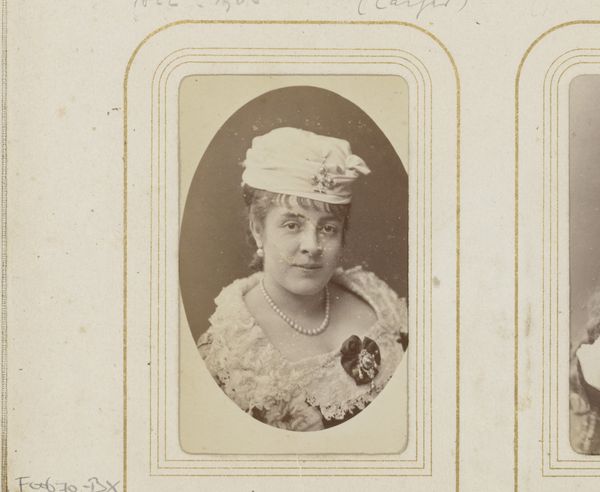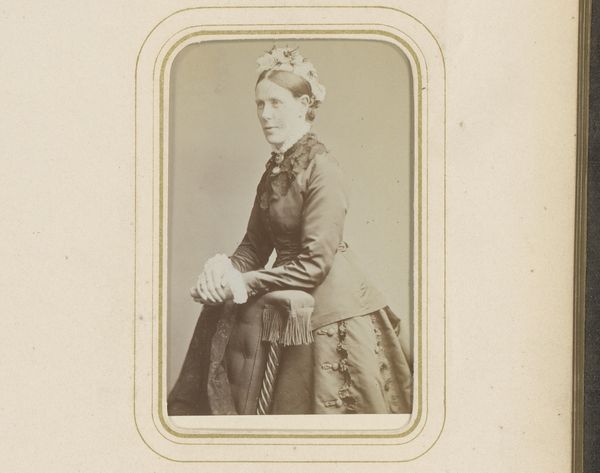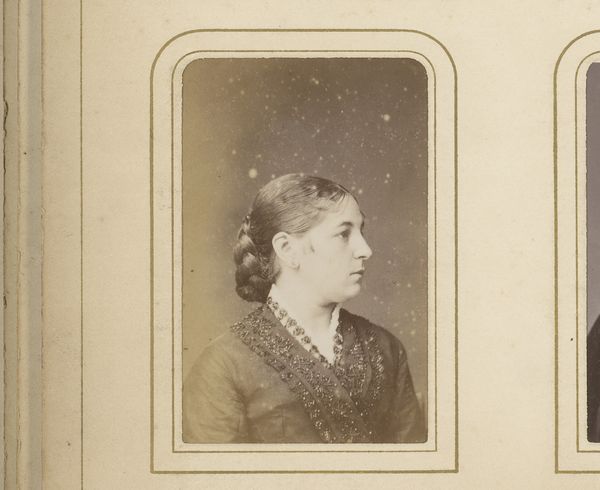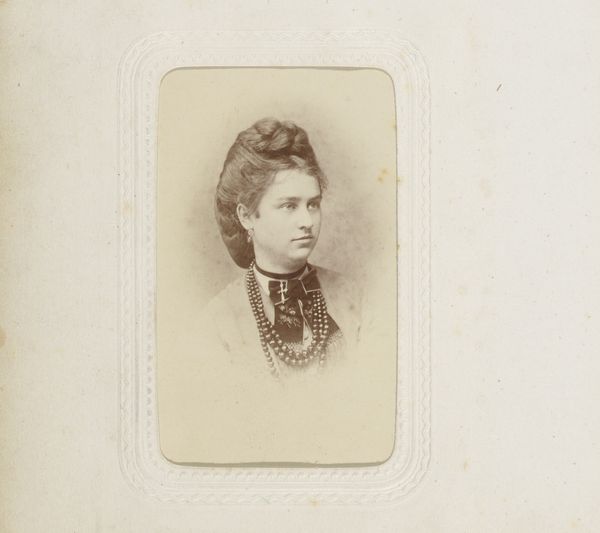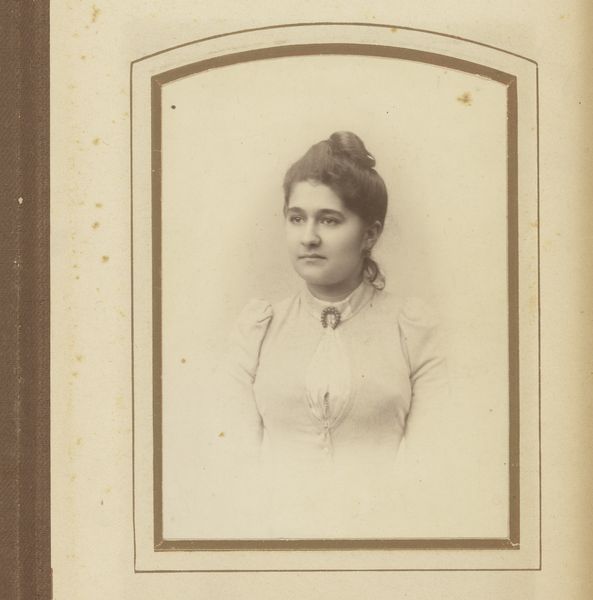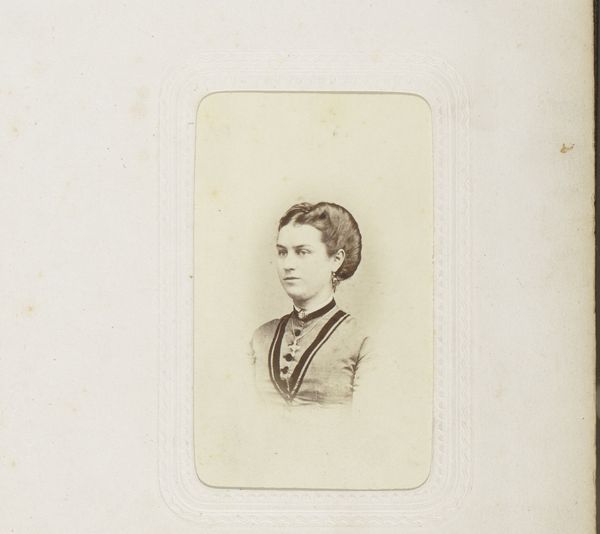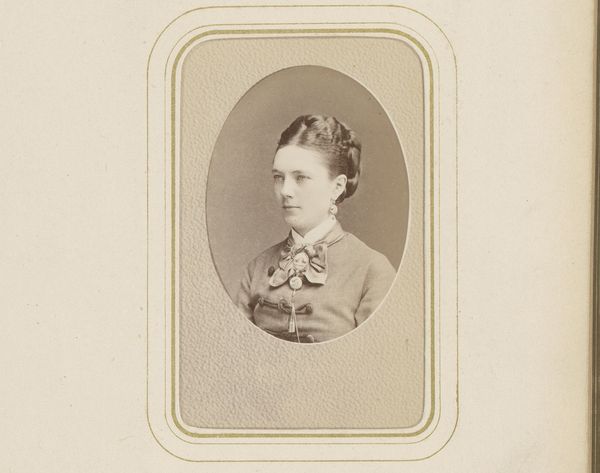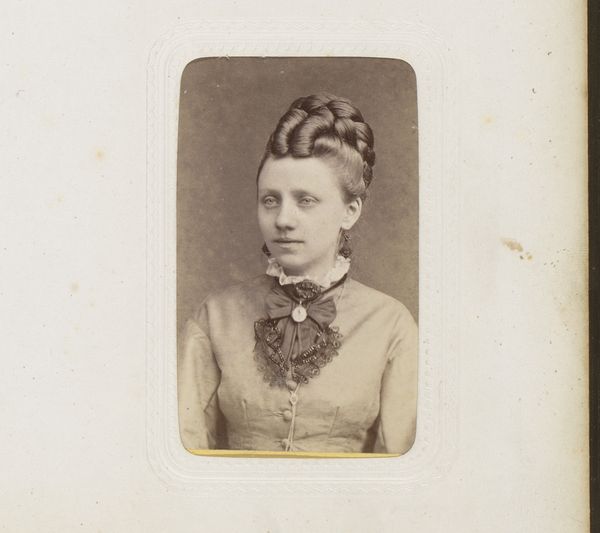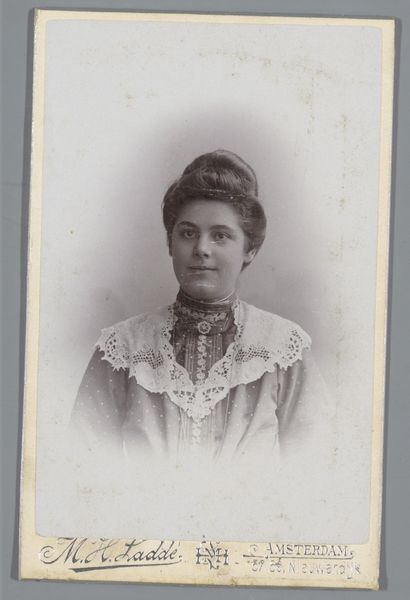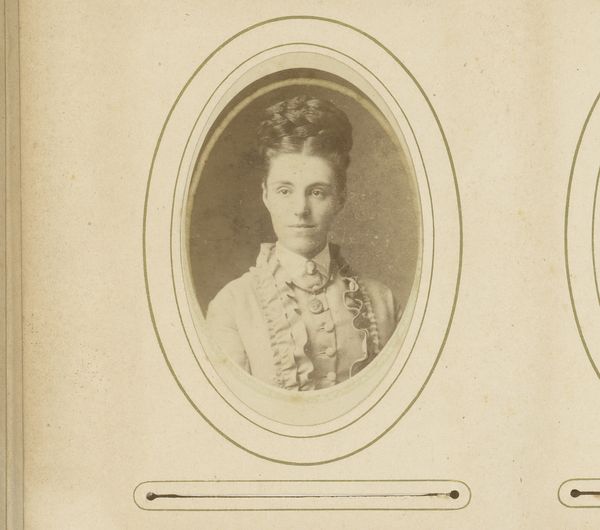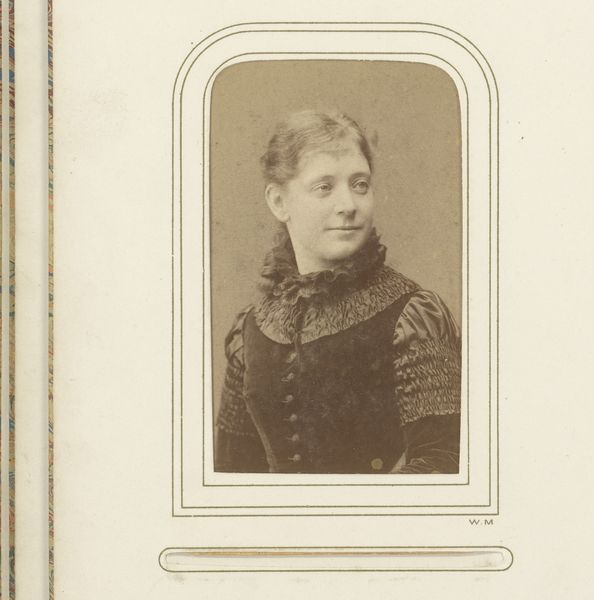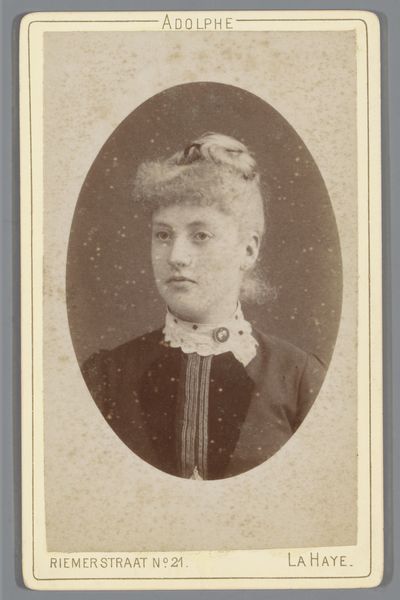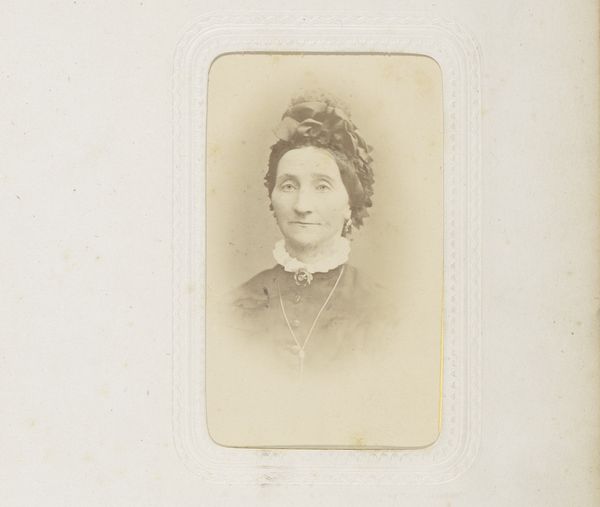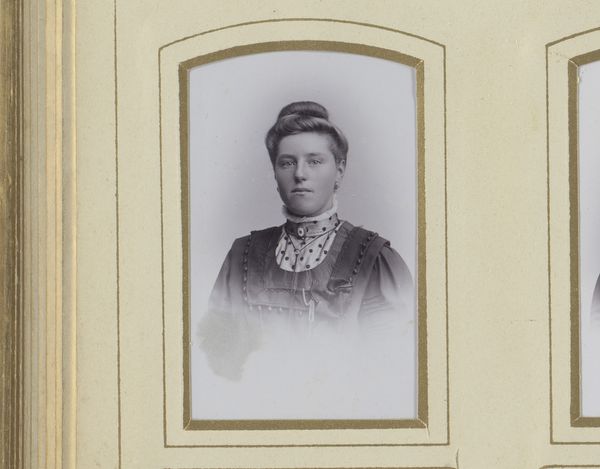
photography, gelatin-silver-print
#
portrait
#
charcoal drawing
#
photography
#
pencil drawing
#
gelatin-silver-print
Dimensions: height 82 mm, width 49 mm
Copyright: Rijks Museum: Open Domain
Curator: Here we have "Portret van een jonge vrouw met halsketting," or "Portrait of a Young Woman with Necklace," believed to have been taken sometime between 1850 and 1900. It's presented as a gelatin-silver print. Editor: My first thought is of the quiet composure captured in this photograph. It is a delicate balance of formality and underlying vulnerability, heightened by the muted tones and the subject's averted gaze. Curator: Absolutely. Photographic portraiture during this period served specific social functions, largely available to the rising middle classes. These portraits solidified status and projected an image, often reflecting societal aspirations. Editor: Right, and this woman’s attire and elaborate hairstyle are indicative of that aspiration. Note the fine details, from the frilled collar to the jewelry, serving not just as adornment, but as declarations of identity and social standing. How did women negotiate those projections within personal and artistic spheres? Curator: Exactly, we must remember the socio-political constraints of the era. Women were often reduced to domestic roles. Photography became one of the acceptable forms of public portrayal but with certain expectations regarding modesty and demeanor. Editor: Which brings up an important tension. On one hand, photography seemingly offered a means of individual expression, and yet, the very act of being photographed, especially within these carefully constructed poses and backdrops, reinforces the limited roles available to women at the time. Curator: Yet, let’s acknowledge the implicit agency. This is her chosen expression, frozen in time. Her choice, in collaboration with the photographer's vision. We also need to examine photographers like Ernst Wolffram, their background and contribution to image creation during the era. Editor: Good point, seeing images as an act of implicit resistance alongside performance brings new layers to its social function. And the nuances of expression remind us of the hidden dimensions within historical narratives. Curator: Ultimately, by contextualizing images within their production and reception, we not only reveal history, but provide means for critiquing the present through different images. Editor: That’s why connecting these photographs to issues of gender, identity, and representation can spark more urgent dialogue about what still prevails. It pushes us beyond nostalgia and engages us to re-interpret, rewrite, and reclaim women’s agency in image making today.
Comments
No comments
Be the first to comment and join the conversation on the ultimate creative platform.
